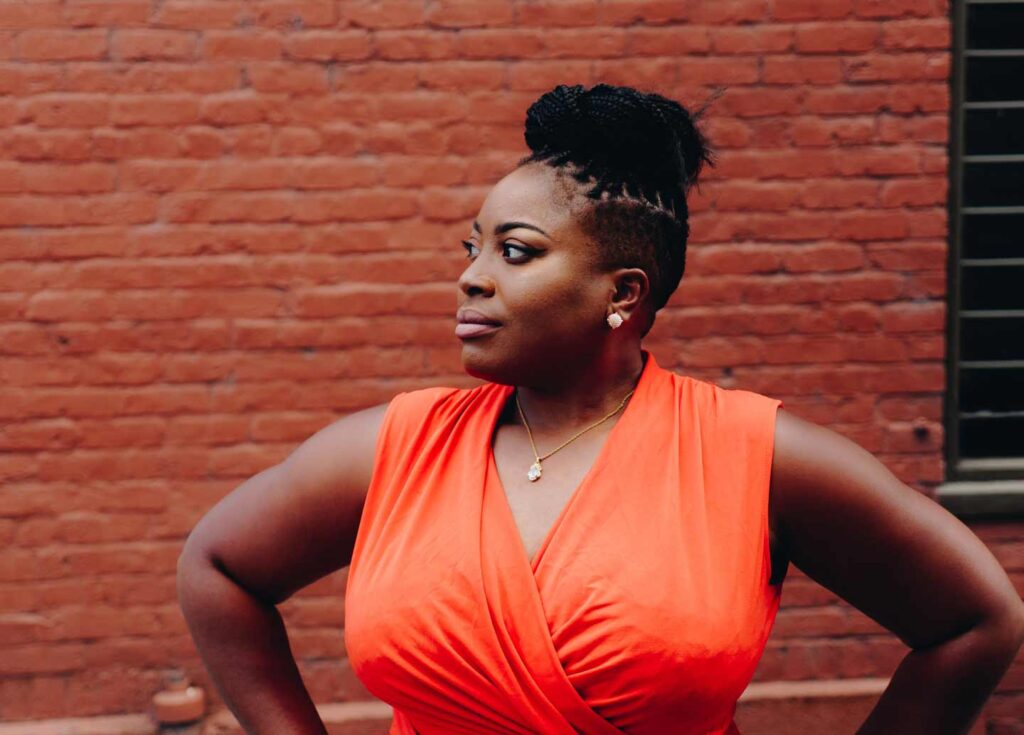The Gender Binary is the notion that there are only 2 genders – male and female. Non-binary is an umbrella term used to describe any gender identity which doesn’t fit within the gender binary.
Non-binary people may identify as being both male and female, somewhere in between, or as a completely different gender altogether.
In this article, we will discuss how non-binary individuals identify themselves and differ from binary individuals, along with the challenges and progress revolving around this concept. Let’s dive straight into it!
Table of contents:
- Binary vs. Non binary
- Arguments for the Gender Binary
- Arguments Against the Gender Binary
- Understanding the reasons why people identify as non-binary
- Challenges faced by non-binary individuals
- The social progress around non binary individuals


Binary vs. Non binary
The gender binary is the classification of gender into two distinct, opposite forms of masculine and feminine, which is often based on biological sex. Non-binary individuals are those who do not identify as exclusively masculine or feminine.
This can be due to a variety of reasons, such as a person’s personal identification, experiences, or beliefs. While the gender binary has been the dominant view of gender for much of history, there is an increasing acceptance of non-binary genders in many parts of the world.
The gender binary has been the dominant view of gender for much of history. This is likely due to the fact that most people are born with clearly defined physical characteristics that indicate their biological sex.
For example, someone with a vulva and breasts is typically considered to be female, while someone with a penis and testicles is typically considered to be male.
This binary view of gender can be seen in many aspects of society, such as in the way that people are socialised, the way that gender roles are defined, and the way that people are represented in the media.
However, there is an increasing acceptance of non-binary genders in many parts of the world. This is likely due to a greater understanding of the complex nature of gender identity.
It is now recognised that gender is not simply a binary construct, but rather a spectrum with many different possible identities. This understanding has led to a more inclusive view of gender that allows people to express their unique identity in whichever way they feel comfortable.
You might also be interested in: Gender Identity and Sexual Orientation
Is gender binary harmful to society?
There is a lot of debate surrounding the gender binary and non-binary identities. Some people argue that the gender binary is harmful and that we should get rid of it altogether. Others argue that the binary is necessary in order to maintain order and that non-binary identity are simply a result of confusion or mental illness.
So, what’s the truth? Is the gender binary harmful or not? Let’s take a look at some of the arguments for and against the gender binary.


Arguments for the Gender Binary
1. The gender binary is necessary in order to maintain order
Some people argue that the gender binary is necessary in order to maintain order in society. They believe that if we allowed people to identify as any gender they choose, it would be chaos.
After all, how would we know to who to assign bathrooms, locker rooms, and other sex-segregated spaces? How would we know who to put on sports teams? How would we determine who gets which job?
2. The gender binary is natural and has existed for centuries
Others argue that the gender binary is natural and has existed for centuries. They believe that there are only two genders because that’s how we reproduce.
They also point to historical evidence like dress codes and different roles assigned to men and women throughout history as proof that the gender binary is natural.
3. Non-binary identities are simply a result of confusion or mental illness
Some people argue that non-binary identities are simply a result of confusion or mental illness.
They believe that people who identify as non-binary are just confused about their true identity. They may also point to studies that suggest that transgender people have higher rates of mental illness as evidence that non-binary identities are not real.


Arguments Against the Gender Binary
1. The gender binary is harmful and exclusionary
One of the main arguments against the gender binary is that it is harmful and exclusionary.
The binary only allows for two genders, which means that anyone who doesn’t fit into those categories is excluded.
This can be particularly harmful to transgender and gender non-conforming people, who may feel like they don’t belong anywhere.
2. The gender binary is an artificial construct
Another argument against the gender binary is that it is an artificial construct. There is no scientific evidence that there are only two genders. In fact, there are many cultures around the world that recognise more than two genders. This shows that the gender binary is a social construct, not a natural one.
3. The gender binary limits our possibilities and stifles creativity
The final argument against the gender binary is that it limits our possibilities and stifles creativity. When we only allow for two genders, we limit ourselves to a very narrow view of what gender can be.
This can be restrictive and make it difficult for people to express their true identities. It can also prevent us from exploring new and creative possibilities for genders beyond the binary.


Understanding the reasons why people identify as non-binary
There is no one answer to why people identify as non-binary. For some, it may be a rejection of the gender binary and the societal expectations that come with it.
For others, it may be a way to more accurately express their gender identity, which doesn’t fit neatly into the category of “man” or “woman”. And still, for others, it may be a way to express their queer identity.
Whatever the reason, more and more people are identifying as non-binary. In fact, a 2016 study found that 1.4% of young adults in the US identify as non binary. That might not sound like a lot, but it’s a significant increase from previous generations.
There are many reasons why people might identify as non-binary. Here are just a few:
1. To reject the gender binary
The gender binary is the belief that there are just 2 genders: male and female. But this isn’t accurate or inclusive of everyone’s experiences. Non binary people often reject the gender binary because it doesn’t reflect their reality.
2. To more accurately express their gender identity
For some people, neither “man” nor “woman” accurately describes their gender identity. They might feel like they don’t fit into either category or like they’re somewhere in between. Identifying as non binary allows them to express their gender identity more.
3. To express their queer identity
For many queer people, identifying as non-binary is a way to express their sexuality or gender identity outside of the heterosexual norm. It’s a way to subvert traditional ideas about gender and sexuality and create their own identities.
Whatever the reason, more and more people are identifying as non-binary. This is likely due to increased visibility and acceptance of non-binary identities. As society becomes more open to diverse identities, we’ll continue to see more people identifying as non-binary.


Challenges faced by non-binary individuals
The increased visibility of non-binary people has led to many challenges and opportunities. One challenge is that many non-binary people face discrimination and violence from those who adhere to the traditional gender binary.
This can be especially difficult because non-binary people often do not have the same legal protections as those who identify as either male or female. Another challenge is that non-binary people may have difficulty finding inclusive spaces where they feel comfortable and can express their identity without fear of judgment or violence.
1. Language
But apart from that, one of the biggest challenges faced by non-binary people is the way that language is used.
The English language is notoriously gendered, with words like ‘he’ and ‘she’ used to refer to people of different genders.
This can make it difficult for non-binary people to communicate their identity and often leaves them feeling invisible or misunderstood.
2. Medical treatments
Another challenge faced by non-binary people is the way that they are treated by medical professionals. Because most medical systems are designed with only two genders in mind, non-binary people can often find themselves without access to the care and treatments they need.
This can be a particular problem when it comes to mental health care, as many mental health disorders are only diagnosed in women or men.
3. Everyday products
Finally, non-binary people can often find it difficult to find clothes and other products that fit their gender identity.
With most stores catering to either men or women, it can be hard to find items that feel right for those who don’t identify as either gender. This can be a frustrating and isolating experience, especially for young people who are still exploring their identity.
Despite the challenges faced by non-binary people, there is also a lot of strength and resilience within this community.
Non-binary people are often creative and resourceful, finding ways to express their identity in spite of the difficulties they may face. And as society becomes more accepting of diverse gender identities, it’s likely that the challenges faced by non-binary people will start to lessen over time.


The social progress around non binary individuals
Fortunately, there are also many opportunities for non-binary people to create inclusive spaces for themselves and others. For example, there are an increasing number of businesses and organisations that are beginning to recognise and support non-binary employees and customers.
Additionally, there are online communities and resources that provide support and information for those who identify as non-binary. These communities can be invaluable in helping non-binary people feel less alone and more connected to others who understand their experience.
Summary
In essence, the gender binary is the classification of gender into two distinct; opposite forms of masculine and feminine, which is often based on biological sex. Non-binary individuals, on the other hand, do not identify as exclusively masculine or exclusively feminine. They may identify as a mix of both genders, somewhere in between, or as neither.
There are a variety of reasons why someone might identify as non-binary. For some people, it may be a personal identification that does not fit into the traditional masculine/feminine dichotomy.
For others, it may be a way to express their dissatisfaction with the gender roles that society imposes. And for still others, it may be a political statement against the discrimination and violence that non-binary people often face. Whatever the reason, non-binary identities are becoming more visible and accepted in society.
The challenges faced by non-binary people are significant, but so are the opportunities. As society becomes more aware of the existence of non-binary genders, we will hopefully see more inclusive policies and practices put into place that support and protect this marginalised group.
In the meantime, non-binary people will continue to create safe spaces for themselves and others where they can be their authentic selves without fear or judgment.
At the end of the day, we should all just be kind to one another and accept that we’re all different. We all have our own unique experiences and perspectives, and that’s what makes us special.
